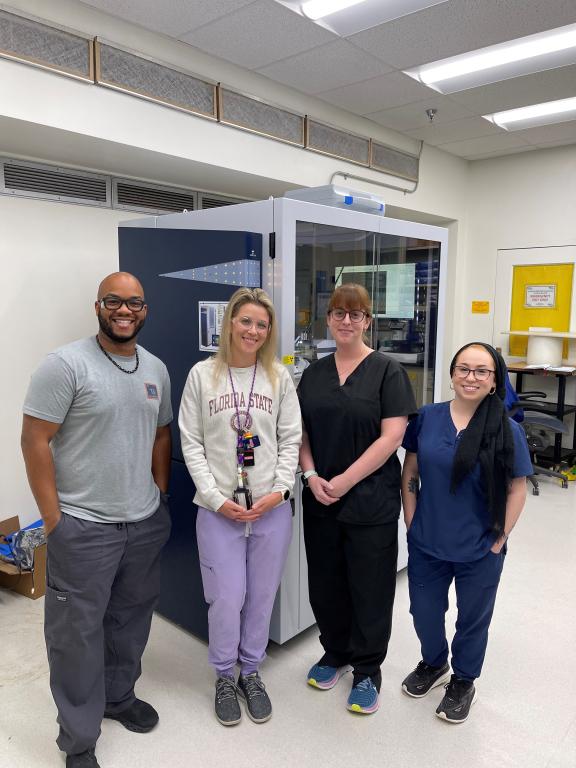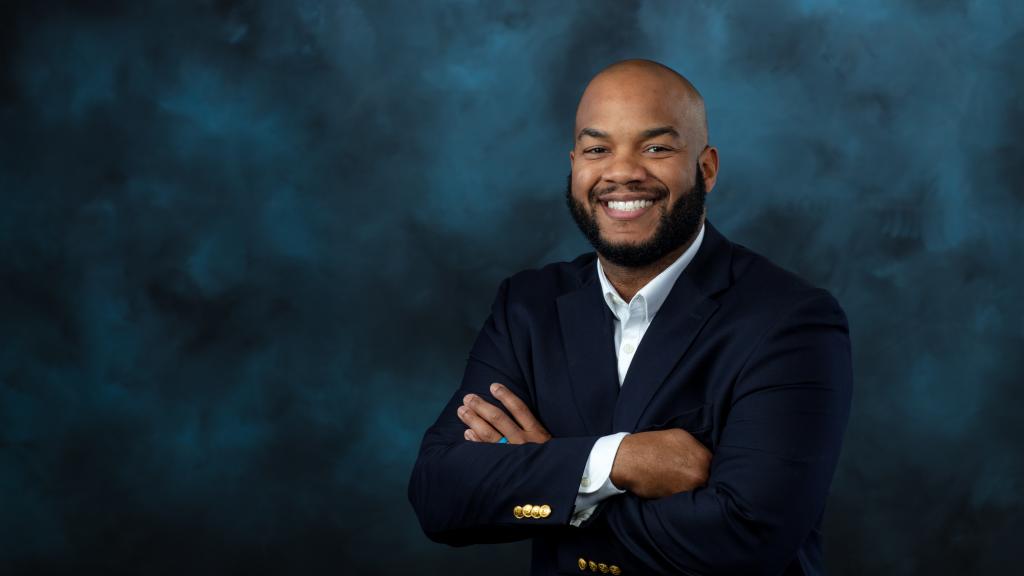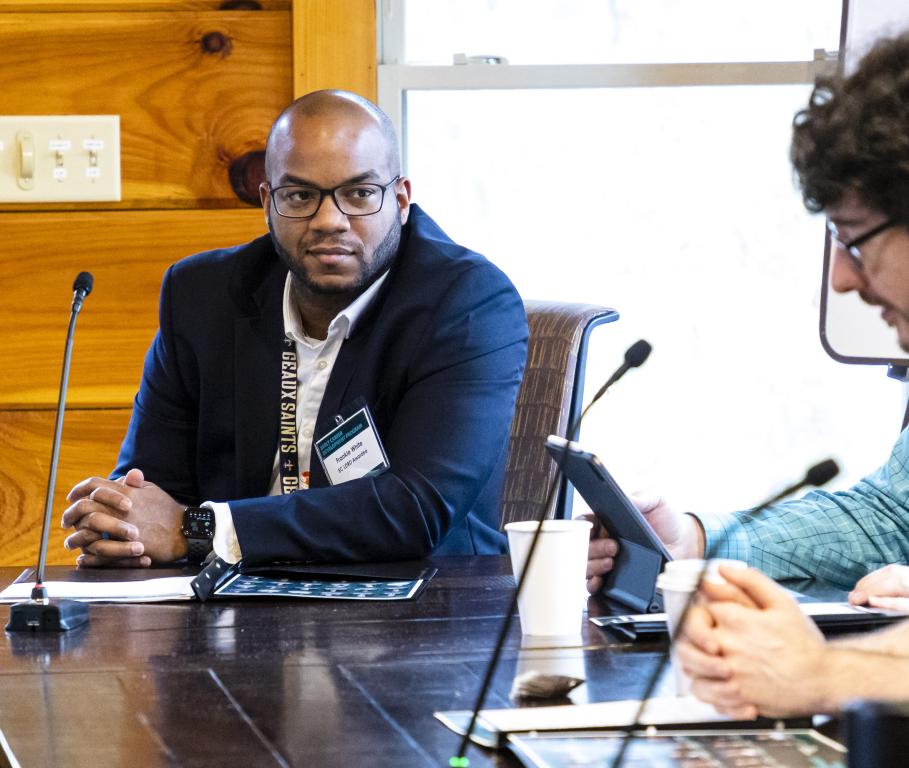
The beginning of 2023 was life-changing for Frankie White - at home, and at work.
White, an R&D associate in the Isotope Science and Engineering Directorate's isotope Applications Research group in the Radioisotope Science and Technology Division, was closing in on an important milestone: the first synthesis and characterization of a radium compound using single crystal X-ray diffraction.
At the same time, he was preparing to be a father.
In February, White and fellow scientist Nikki Thiele of the Chemical Sciences Division of ORNL's Physical Sciences Directorate received the radium they needed to set up the reaction that supported their research. With team members Sam Schrell and Megan Simms, they successfully synthesized a molecular radium complex and used single crystal X-ray diffraction to characterize its properties, then buckled down to record their findings in the paper that ultimately would be published in the peer-reviewed journal Nature Chemistry.
In March, he and wife Amanda welcomed their first child.
Balancing new parenthood and writing, "I didn't get any sleep," White said, laughing, noting that he used the month before his son's birth to try to complete the paper.
The radium paper was published in November 2023, when his son was 8 months old. By that time, White was heavily involved in another groundbreaking study, this time as part of an ORNL-led team of 18 scientists seeking to characterize the properties of a different isotope, promethium.
Knowing the coordination chemistry of radium, which White and Thiele's research has illuminated, could help scientists develop radium-based cancer treatments by designing molecules, called chelators, to which radium can attach so it can be delivered directly to tumor sites.
That information about how radium bonds to other molecules has been hard to come by because the highly radioactive element is available only in small amounts. White and Thiele developed the process for crystalizing the radium compound by using barium, which often is used as a stand-in for radium in research. It was the first time a single crystal of a radium structure had been analyzed.

Importantly, their work revealed that radium can be significantly different from barium, so chelators designed using barium are not always optimal for radium, as researchers previously assumed.
"It was actually kind of puzzling at first," White said. "The reaction didn't produce the same compound that we were expecting it to make. The crystals weren't the same shape as normal. … I thought the crystals might not even actually contain radium because it was so different from what I was used to seeing."
The unexpected result led to their exciting publication.
"It ended up being something even cooler than what we were trying to make," said White, who plans to build on the radium chemistry research. "If we are able to add to the foundation of knowledge about how radium will behave chemically, other researchers will be able to develop the chelators they need to get it to other places in the body."
Fifteen years ago, as an undergraduate student at the University of South Alabama, White was training for a different kind of building: He started out as an architecture major.
But White decided that wasn't the career path for him, and, casting around for a new major, he learned he loved chemistry - specifically with heavy elements.
White wasn't sure where that interest would take him, careerwise. He finished his bachelor's degree in biochemistry at the University of South Alabama, where he then obtained a master's degree in environmental toxicology. Immediately afterward, he earned his doctoral degree in inorganic chemistry from Florida State University. White's work there in heavy element chemistry led him to a year-and-a-half-long postdoctoral position at Los Alamos National Laboratory, followed by a full-time staff scientist job from 2020-2022.
"I started off in biochemistry because I cared about medical-related fields," said White, but then he found himself performing pure inorganic chemistry as he worked on his master's degree and doctorate. White worked with the f-block (for "fundamental") of metallic elements. The f-block, displayed as a subset of the periodic table, comprises two series: the lanthanides, elements 57-71, of which only promethium is radioactive, and the actinides, elements 89-103, which generally are radioactive.
Ultimately, White's work at Los Alamos provided a path back to medical chemistry. At Los Alamos, he worked on new methods for purifying radium retrieved from legacy medical devices by separating it from metals. Subsequently, he performed research related to plutonium production.
"I really enjoyed Los Alamos, but I missed home, being in the South," said White. As Mobile, Alabama natives, he and Amanda wanted to be closer to family.
ORNL offered the right opportunities, and White joined the Lab's staff in January 2022. Besides his work with radium, White is researching process optimization for plutonium production and promethium chemistry.
"That's the nice thing about ORNL: you can have your foot in different areas," White said. "You can work across directorates on production and research. Collaboration is big."
That's the nice thing about ORNL: you can have your foot in different areas. You can work across directorates on production and research. Collaboration is big.
- Frankie White

For example, on the team that prepared a chemical complex of promethium and used X-ray spectroscopy to learn the properties of that rare element for the first time, White worked with scientists not only across multiple ORNL directorates, but also at Brookhaven National Laboratory. Researchers synthesized and purified the promethium using ORNL's High Flux Isotope Reactor and Radiochemical Engineering Development Center, and the X-ray absorption spectroscopy was performed at Brookhaven's National Synchrotron Light Source II. Calculations and simulations were performed at the Oak Ridge Leadership Computing Facility.
The study, published in the journal Nature in May, is groundbreaking because the previous lack of information about promethium, discovered in 1945 at the Oak Ridge lab, left a gap in the series of lanthanides. The team's research could lead to improved, easier ways of separating the lanthanides, which have uses ranging from medical to nuclear batteries for space travel.
"The biggest hurdle in using promethium is purifying it from the other f-elements," White said, calling the research "beyond exciting."
White still is exploring his own long-term career goals. He enjoys mentoring students and managing teams as much as f-element research.
"I like being able to bring people together for a bigger goal," White said. "I'm a people person."
That extends to his personal life as well.
"I want to be the best role model I can be to my son," he said. "I had a great role model in my dad."
Besides time spent with family, White enjoys softball, socializing and applying his skills to barbecue, a cooking passion he said lets him use both chemistry and creativity.
"Barbecue is an art," he said, "and sometimes chemistry can be an art as well."
UT-Battelle manages ORNL for the Department of Energy's Office of Science, the single largest supporter of basic research in the physical sciences in the United States. The Office of Science is working to address some of the most pressing challenges of our time. For more information, please visit energy.gov/science.






